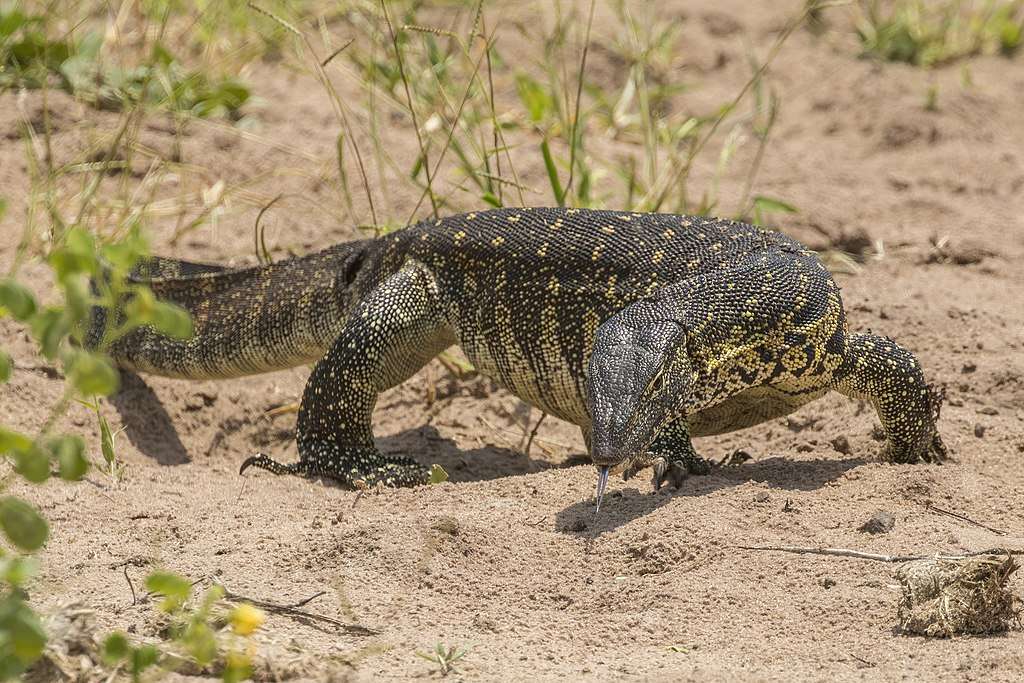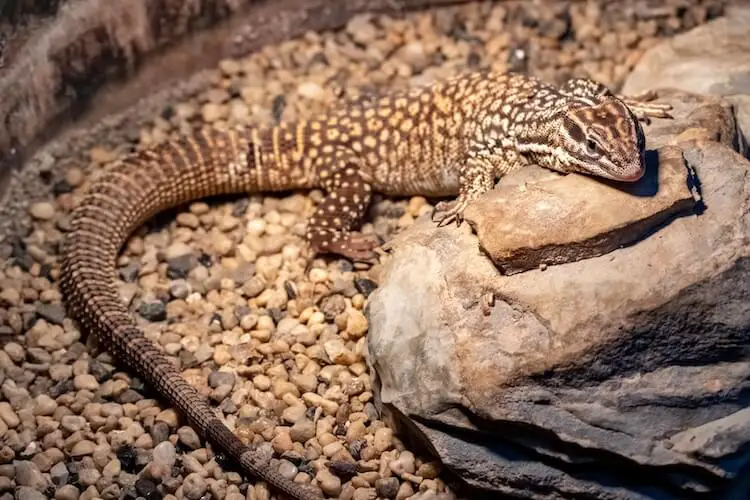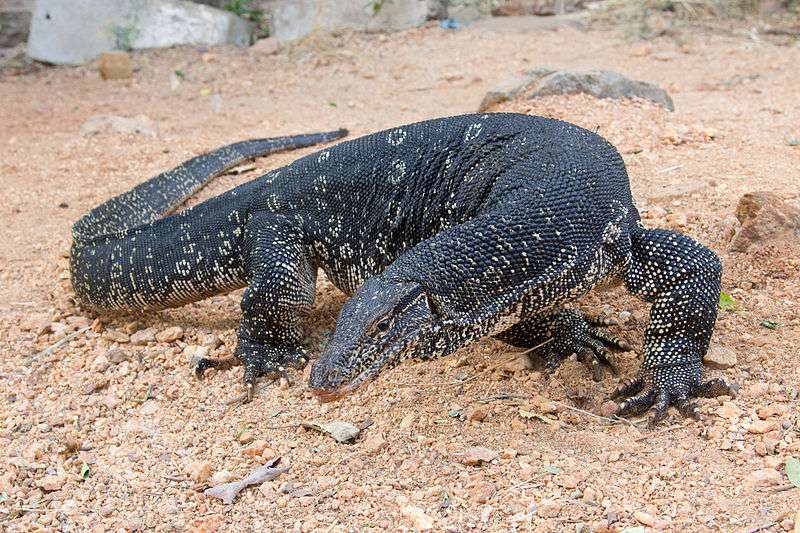
Description:
Scientific Name: Varanus niloticus
Life span: Up to 10-20 years
The Nile monitor is a giant monitor lizard. Hatchlings are roughly 30 cm long and 26 g in weight, while adults may reach sizes of 2.4 meters and have a physically amazingly strong build. They can climb trees with ease because of their sharp claws and powerful, muscular legs. The Nile monitors’ deep, stoutly built cranium, blunt, shattering posterior teeth, and sloping lower jaw make it simple for them to consume hard-shelled food like mollusks. Bead-like scales cover the hard skin. Their rounded nostrils are positioned a little bit closer to the eyes than the snout. The toes are robust and average in length.
The skin patterns of the Nile monitor are highly distinctive, but they can vary. They are grey-brown above with greenish-yellow striping on the tail and big, greenish-yellow rosette-like markings on their back with a black little area in the center. Their underside and throats range in color from ochre to creamy yellow, and they sometimes have subtle barring.
Native Region/Habitat
Nile monitors are found in Sub-Saharan Africa and along the Nile. They are not distributed in any of Africa’s arid regions, though, because they flourish near water. Nile monitors live in a range of environments; including mangrove swamps, dry savanna, scrub, and thickets of evergreen trees. Nile monitors are often found around bodies of water, whether temporary or permanent, and particularly near rivers, lakes, and pans.

Behavior:
Nile monitors seldom interact with members of their own species outside of the breeding season. They are mostly solitary animals. Nile monitors spend their idle period basking or resting on plants, trees, logs, and rocks at the water’s edge, frequently in a conspicuous location. It hibernates in large rock fissures or burrows in the colder regions of South Africa. This monitor keeps its body well off the ground when traveling and foraging, and it uses its large, forked tongue to detect prospective food sources. Nile monitors are often suspicious and, if confronted, may flee or leap into the water, frequently from a great height. They can swim really well.
Nile monitors may survive in captivity, but they aren’t necessarily the best pets. You might be able to trust your monitor lizard a little bit if it has been handled frequently when it was young, but more often than not, they aren’t particularly docile or reliable. These reptiles are huge, powerful, and occasionally aggressive. The majority of Nile monitors reject efforts to tame them and retain their violent attitudes as adults. Nile monitors’ tails will whip while they’re young. When agitated, Nile monitors won’t think twice about biting, which is unpleasant given their size. Due to the temperament and size of the animal, these pets are not appropriate for households with young children.
Care As a pet/In captivity:
Bigger is always preferable for housing reptile pets and this is true even more so for a monitor that enjoys climbing, swimming, and running and can become up to nine feet long. Your Nile monitor cage should be at least twice as long as your adult lizard. Additionally, the housing must be impenetrable enough to keep a monitor from climbing out or digging a hole under a fence to escape. It is necessary to have access to a sizable body of water, especially one where your monitor can swim around, as well as a hiding place that can be scaled. There should be a 110–130 degree area for basking. The remainder of the enclosure may have 80-90 degrees.
Table





